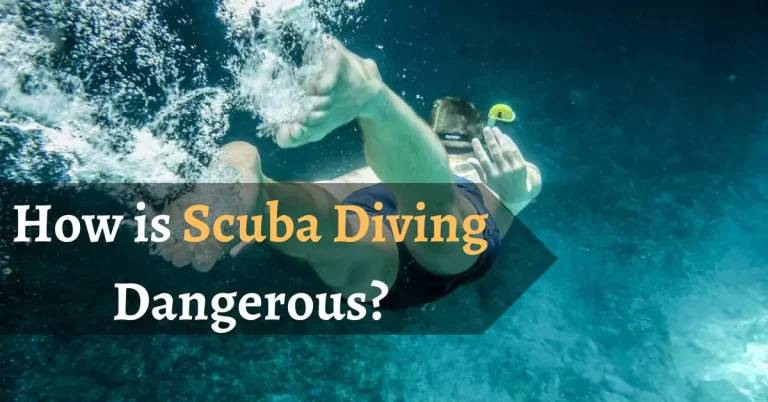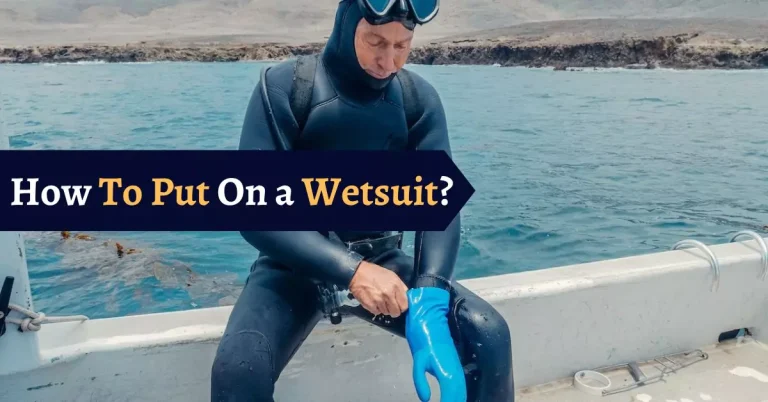How to stop water going up your nose when diving?
How to stop water going up your nose when diving ? When water enters your nostrils while diving, the experience is both unpleasant and uncomfortable. It’s already challenging when you’re in the center of a lane and you must pause to cough and sputter, causing you to lose your forward motion. When diving, a nose clip or scuba mask can be used to prevent water from entering the nares.
Nose clips are a temporary fix; to truly avoid discomfort, you should work on your breathing method to prevent water from entering your nose in the first place. how to keep water from going up your nose? For this to happen, cup your palms around your nose and breath into them. Learn to regulate the outflow of air from your sinuses to avoid getting wet. To train, cup your hands, place your nostrils in them, inhale deeply, and then exhale the air out of your nose into your hands.

Strategies to Prevent Getting Water in the Nose
Water in the nose is easily avoided by treating breathing as a separate swimming ability.
Take it easy at first and aim your attention where it needs to be.
Breath control can be trained by doing bobs or merely bringing the face out of and back
into the water. It’s best to take your time and not rush through a bob.
The kickboard can be used as a breathing aid as well. You can put some time into bob
drills in between laps to give your body a break. Keep in mind that you won’t be able to
drink water if any of it is escaping through your nostrils.
Does water go in your nose when you swim? Even if you tilt your head back to catch your
breath, water won’t sneak its way up your nostrils. Your nasal air creates an airtight seal that
blocks the flow of water upward from below. The area around your sinuses may feel wet at
first, but you should persevere through this temporary discomfort.
It takes a pair of abilities to swim without having water up your nose. To begin, take it slow and
concentrate on breathing as a swimming ability. The next step is to learn how to use a nose clip
and cup your palms to regulate the airflow through your nostrils.
Furthermore, you need to dive headfirst into the water and instantly blow a stream of tiny bubbles by exhaling through your nose. Lastly, when swimming the backstroke, it’s best to breathe through the mouth rather than the nose. So, this is how to swim without getting water in your nose.
Some bad habits about diving you should avoid.

How to stop water going up your nose when diving? 3 Steps
- Raising Your Head Above Water
If you’re trying to keep water out of your nostrils while swimming, lifting your head out of the
water can throw off your balance. If you want to keep your head above water, you’ll have to
angle the remainder of your body straight down, which increases opposition and drag and thus
the amount of energy needed to swim.
- Nose holding by hand
Many swimmers, even at an early age, have developed the habit of using one hand to cover
their noses. When a child develops a habit of using only one arm while swimming, it can be
challenging to stop the behavior. Having only one hand free to dive with is less than optimal, so
remind your swimmers to always keep both free.
- Using Nasal Plugs
How to not plug your nose underwater? People use a variety of methods to prevent water from
entering their nostrils while swimming, including nose plugs, holding the nose shut with one
hand, and simply not submerging the face at all. All these ways make it harder to improve one’s
stroke and play more efficiently. Many people can break these patterns and progress to their
highest level of diving with enough training.
Also, read How To Record Underwater -Ultimate Guide 2023
Frequently Asked Questions (FAQs)
Is It Possible to Become Sick from Inhaling Water?
Getting dirty water up your nose is a bad idea. Learning about the risks and common
pathogenic organisms in your area is important if you are an outdoor diver, where the risk of
meeting water that is polluted, and bad bacteria is much higher than in a chlorinated pool.
I was wondering how much longer I could remain submerged if I could train
myself to stop holding my nose?
How far you can go is directly proportional to the strength of your muscles. Depending on their
pulmonary strength, some individuals can hold their breath for longer than others. Please don’t
hold your breath for any longer than is safe, and if you start to feel dizzy, lift yourself up and
exit the water right away.
Why does swimming get water up my nose?
Only when you are completely drowned, lying on your back, performing a flip turn, or diving
backstroke will water penetrate your nose. Yet, if you turn your head too far to one side while
performing the front crawl, you may end up with water up your nostrils. Because of the
pressure difference, water may shoot up your nose if you’re in this posture for too long.
When I go underwater, why does water keep going up my nose?
Most people who experience this issue are advised to use a nasal clip. When diving, nose clips,
which are small and easy clips, are worn to squeeze the nose and seal the nostrils. Making a “k”
sound with your tongue pressed against your soft palate is a typical way to seal off the nasal
passages. Water going up your nose during swimming is usually caused by air escaping from
your nose or sinus cavity.
How can you prevent water from entering your nostrils as the primary
method of defense?
how to not get water in nose while swimming? The trick is to either keep it inflated or cover
your nose and mouth to prevent any changes in air pressure. Having more oxygen in your nasal
passages and sinuses reduces the likelihood of water entering these areas.
How can you avoid getting water in your nose when you flip?
If you keep your breath while you’re flipping, water will go right up your nostrils. Just before
you make that final bow, let out a little breath through your nostrils (it should feel like you’re
murmuring). Since water going up the nose is a frequent problem for swimmers practicing the
flip turn, this is a great way to avoid it.
Conclusion
Please go and exercise! If you want to avoid getting water in your nose, pinch it shut and learn
to breathe through your mouth instead. This will help you adjust to breathing while beneath.
Do not let any bubbles penetrate your nose by pinching it shut. Once you’ve submerged your
face, it’s important to concentrate on breathing normally through your lips.
If you want to be able to breathe from a regulator without a mask, you’ll need to practice this method a few times. Only the air inside the water should be felt while diving. Just remember to take deep breaths, calm down, and use our advice, and this will soon be your best part of diving.






